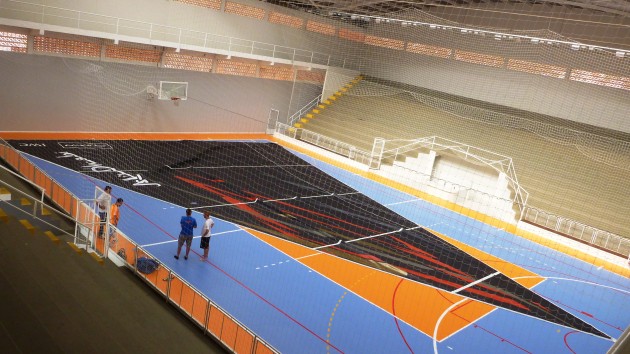Abu Dhabi’s team director Jamie Boag describes the their race against time as an Apollo 13 style exercise
‘It’s a race against time,’ has been one of the familiar mantras of this 2011/12 Volvo Ocean Race as teams struggle to make it to the next port in time for a re-start.
I know we’ve heard it all before, but here’s a fascinating insight into just how tight it is to make it to the next leg as described by Abu Dhabi’s team director Jamie Boag.
Think you have trouble getting everything ready for Cowes Week?!!
“The Volvo Ocean Race is all about man and machine against nature. It is at once both a sporting challenge and a test of human endeavor and adventure. Racing in the depths of the Southern Ocean in a carbon fibre shell doing 50kph and leaping of seven metre waves is in itself something that most of us will never experience but I’m sure many of us would like to try it for an hour or two. On the other hand, being on a boat, hearing tearing noises from the hull and realising that you and your team mates are six days away from rescue, is something that none of us would want to experience. Never mind having to drill 35 holes in the bottom of the boat lying on its side in a gale 1,700 miles from land as the only means of repair. That was a race against Mother Nature and she won that battle. Not the war though
Our rescue mission to get the broken Azzam on a ship from Puerto Montt in Chile to Itajai was always going to be tight. Originally we estimated a 72hr fix to try and get the boat repaired and prepared to take part in the In-Port Race on Saturday and the restart the day after. Mother Nature has not been kind to us, throwing adverse weather conditions in front of the Thorco Emipire ship that is carrying our boat to Itajai. The ship was originally due to discharge her on the 17th, and our latest estimate is now the morning of the 19th.
That gives us about 40 hours to do a 72 hour repair. We also have to factor in that normally we would take three days to prepare the boat and systems for an ocean leg, time we just do not have on this occasion. Yet nothing is impossible.
Since the ship left Chile we have, like the famous scene in Apollo 13, been running scenarios and looking at the different critical paths involved with the repair on the boat.
Every time we go over the process we manage to shave a few minutes here or there. As of yesterday we had managed to get our estimate down to around 55 hours. For example:
- Moving the steel cradle from the ship to the base had originally involved dismantling, trucking and reassembling. We managed to find a small car ferry in the river that could barge the container from the ship to the shore base (about 2 miles). This has saved us 45 minutes a day.
- The repair to the hull requires the core and the inner skin to be cut out. This leaves only a flimsy 1.5mm of carbon skin over a large area which we need to work on. This necessitates a splash, or exact mould being constructed and vacuumed to the outside of the boat over the area where we will do the repair. As we have to repair not only the broken side of the boat, but effect remedial work to the “good” side of the boat we had to build a second splash for the starboard side. After careful study and because the area affected here is smaller the engineers have determined that a second splash, or mould is not required for starboard side of the boat, saving another four hours of work.
And the list goes on. Today we have the white board cleaned again a fresh pair of marker pens, and the thoughts of Apollo 13 in the back of our minds. How can we save more time?
Despite all of the good work above we are constrained by the laws of physics. Resins have cure times, there is a limit on the amount of people who can actually work in a combined space, and there are only a certain amounts of hours in the day. We are also conscious of the old adage that more haste less speed. At the end of the day the repair has to be seaworthy. Our team mates will be launching off to do battle with Mother Nature again in four days time, and we need to sleep safe in our beds knowing that the repairs are as good as they can be.
Will we make it? It won’t be for the lack of trying.




